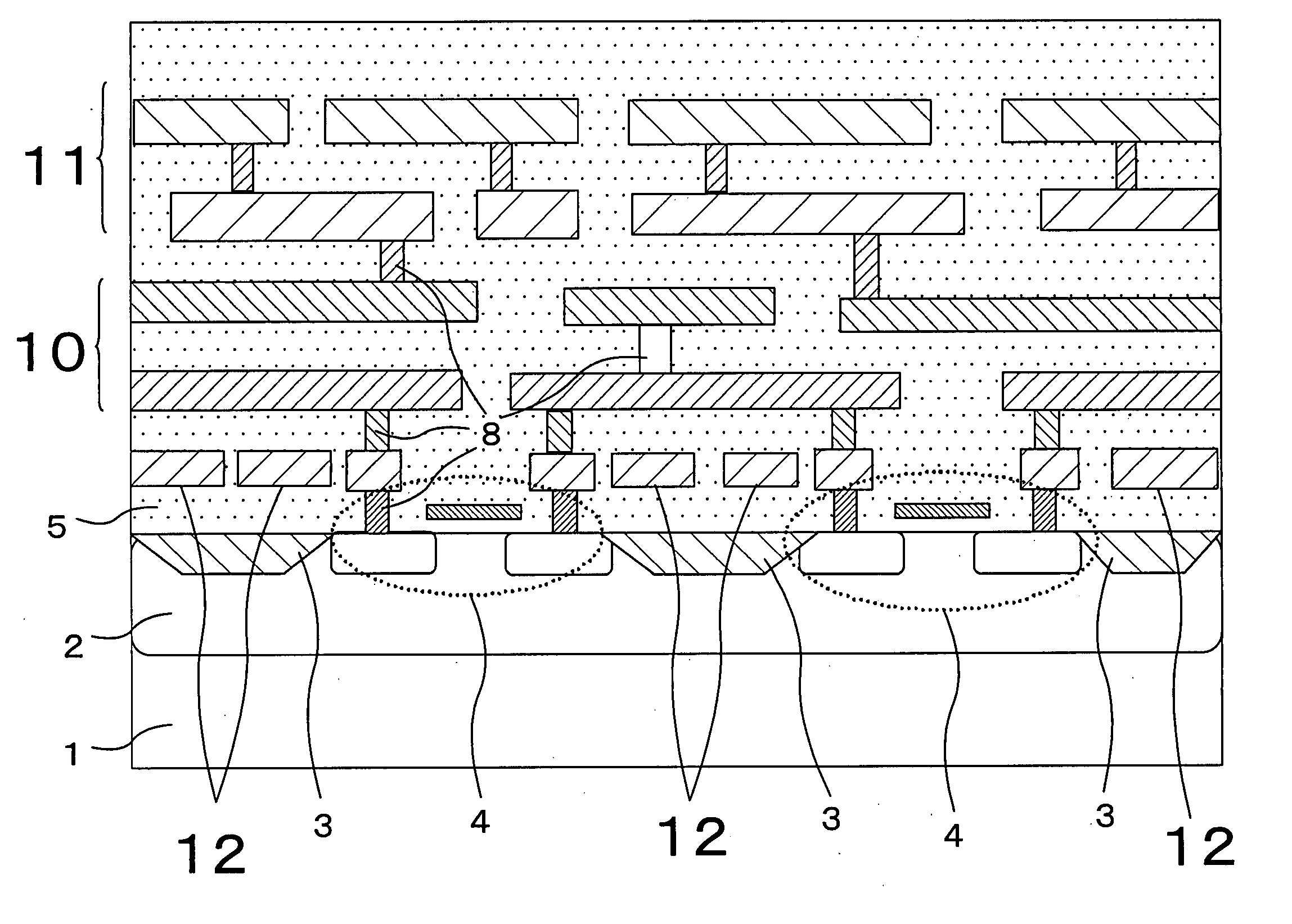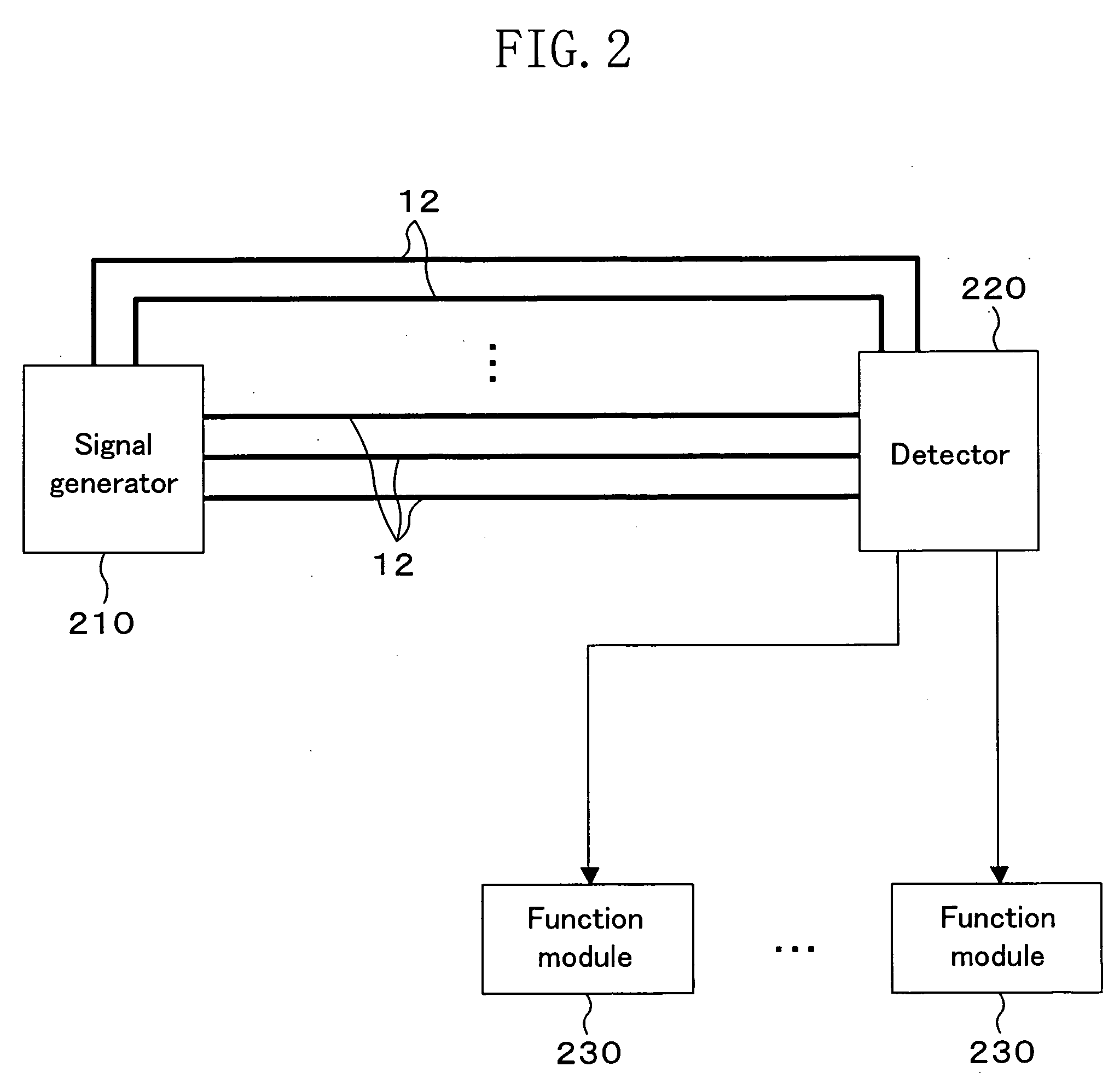Tamper-resistant semiconductor device
a semiconductor device and resistance technology, applied in the direction of logic circuits, semiconductor/solid-state device details, pulse techniques, etc., can solve the problem of significant increase in the difficulty of machining, and achieve the effect of high tamper resistan
- Summary
- Abstract
- Description
- Claims
- Application Information
AI Technical Summary
Benefits of technology
Problems solved by technology
Method used
Image
Examples
embodiment 1
[0041]FIG. 1 shows a cross-sectional structure of a semiconductor device of Embodiment 1 of the present invention. The semiconductor device has transistor elements 4 formed on a p- or n-well 2 that is formed on a semiconductor substrate (p- or n-substrate) 1. A diffusion isolation layer 3 is formed between every adjacent transistor elements 4. Defense wiring 12 is placed above the diffusion isolation layer 3. The defensive wiring 12, which is formed from a lowermost wiring layer, is arranged to cover the region above the diffusion isolation layer 3 at the minimum wiring pitch allowable in fabrication. Above the wiring layer forming the defensive wiring 12, a signal wiring layer 10 is placed, from which signal wiring requiring secrecy (for example, data lines of a memory) is formed. A signal wiring layer 11, from which signal wiring requiring no secrecy (for example, control signal lines on a chip), is placed above the signal wiring layer 10. The signal wiring of the signal wiring la...
application of embodiment 1
[0047]FIG. 3 shows a cross-sectional structure of a semiconductor device of an application of Embodiment 1. The semiconductor device of FIG. 3 has the same structure as the semiconductor device of Embodiment 1 (FIG. 1), except that defensive wiring 20 is formed from a polysilicon layer used for formation of the gates of the MOS transistors 4. This structure makes it unnecessary to newly provide a wiring layer dedicated to the defensive wiring 20, and thus the number of fabrication steps and the fabrication cost can be reduced.
embodiment 2
[0048]FIG. 4 shows a cross-sectional structure of a semiconductor device of Embodiment 2 of the present invention. The semiconductor device of FIG. 4 has the same multilayer wiring structure as that in Embodiment 1 against an attempt of fraudulent analysis from the front, but is provided with a barrier diffused layer 30 against an attempt of fraudulent analysis from the back, in place of the defensive wiring 12. The barrier diffused layer 30 is formed on the p- or n-well 2 with the minimum gap allowable in fabrication from the adjacent diffused layer of the transistor element formation portion 4, and has the polarity (conductivity) opposite to that of the p- or n-well 2. The barrier diffused layer 30 is also applied with a potential reverse-biased to that of the p- or n-well 2. For example, when the potential of the p- or n-well 2 is VSS, the potential VDD is applied to the barrier diffused layer 30, and vice versa.
[0049] The semiconductor device of this embodiment has the same tam...
PUM
 Login to View More
Login to View More Abstract
Description
Claims
Application Information
 Login to View More
Login to View More - R&D
- Intellectual Property
- Life Sciences
- Materials
- Tech Scout
- Unparalleled Data Quality
- Higher Quality Content
- 60% Fewer Hallucinations
Browse by: Latest US Patents, China's latest patents, Technical Efficacy Thesaurus, Application Domain, Technology Topic, Popular Technical Reports.
© 2025 PatSnap. All rights reserved.Legal|Privacy policy|Modern Slavery Act Transparency Statement|Sitemap|About US| Contact US: help@patsnap.com



